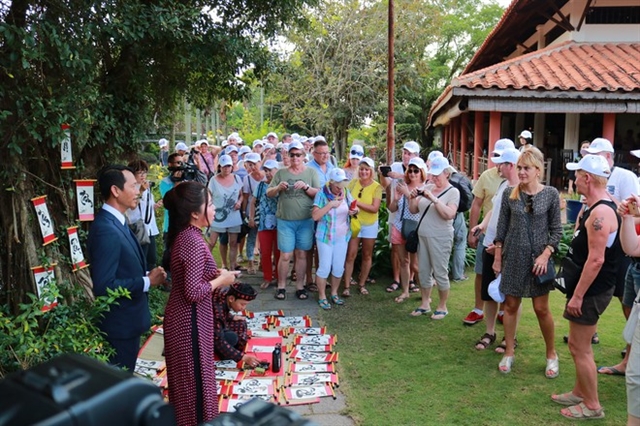 Life & Style
Life & Style


|
| The Củ Chi Tunnels site has attracted many local and international tourists over the years. Photo courtesy of thanhnien.vn |
HCM CITY — Does the Củ Chi Tunnels site have what it takes to receive world heritage status from the United Nations Educational, Scientific and Cultural Organisation (UNESCO)?
The HCM City People’s Committee has recently asked the Ministry of Defence to consider developing a profile for Củ Chi Tunnels and submit it to UNESCO for approval as a world heritage site, according to a report in Tuổi trẻ (Youth) newspaper.
Vice chairman of the HCM City People’s Committee Lê Văn Liêm said the area in outlying Củ Chi District is a valuable historical and cultural site that reflects outstanding military and scientific achievement.
He said it was important to have the Ministry of Defence’s opinion about the plan. Meaningful relationships among soldiers, and between soldiers and locals during wartime, are inspirational and make up Củ Chi Tunnels' intangible values, he said.
The Củ Chi Tunnels site is one of the most attractive tourism attractions in the South. It has outstanding global value, integrity and authenticity in accordance with UNESCO’s requirements. It has also met the first, fourth and fifth criterion of UNESCO’s criteria for selection as a world heritage site, he said.
Experts from the cultural sector of HCM City have agreed to wait for detailed directions from the Ministry of Defence and HCM City People’s Committee before working on the necessary documents for the site's profile.
Special relic
Đặng Văn Bài, vice president of the Việt Nam Association of Cultural Heritage and member of the National Cultural Heritage Council, supports the plan on developing a profile for Củ Chi Tunnels for inclusion on UNESCO’s list of world heritage sites.
The Củ Chi Tunnels site has an underground structure with great historical functions, Bài said. The site contributed to the Great Victory in Spring 1975 and proved that Vietnamese were flexible and adaptable.
An effective management unit would be very beneficial to the growth of Củ Chi Tunnels in terms of tourism development, Bài said.
“The Củ Chi Tunnels site has met many criteria that UNESCO requires to become a world heritage. I strongly support HCM City People’s Committee’s idea to register this site into the list," he said.
However, smooth coordination among experts and authorities is crucial to develop a quality profile for Củ Chi Tunnels.
Nguyễn Xuân Năng, a member of the National Cultural Heritage Council and former director of the Việt Nam Military History Museum, emphasised that the tunnels are a very special relic in Việt Nam.
The tunnels are about 250km total in length with many floors and nooks. They served soldiers in the wars against the French and Americans, and demonstrate a special art of war of the Vietnamese people that is rare elsewhere, Năng said.
Digging the long and complicated tunnels was hard enough, but being able to keep them a secret from the enemy was even harder, he added.
Generations of leaders such as Nguyễn Văn Linh, Võ Văn Kiệt, Trần Bạch Đằng, Mai Chí Thọ, Nguyễn Hồng Đào and Nguyễn Hải Phụng, among others, once lived and worked there.
Phan An, former director of the Southern Institute of Social Sciences, said the proposal to recognise Củ Chi Tunnels as a world heritage would introduce this special relic to international friends, and also provide locals with a chance to appreciate this site.
He said the Củ Chi Tunnels site has not been fairly embraced. Though it is a significant historical and cultural site, many locals born and raised in HCM City have never once set foot on the spot.
Communication programmes used to promote the site are relatively weak, and only a part of the Củ Chi Tunnels system has been properly preserved for tourism purposes, according to An.
If the Củ Chi Tunnels site received world heritage site status, authorities and locals would be more responsible and take action to protect it, he said. VNS




